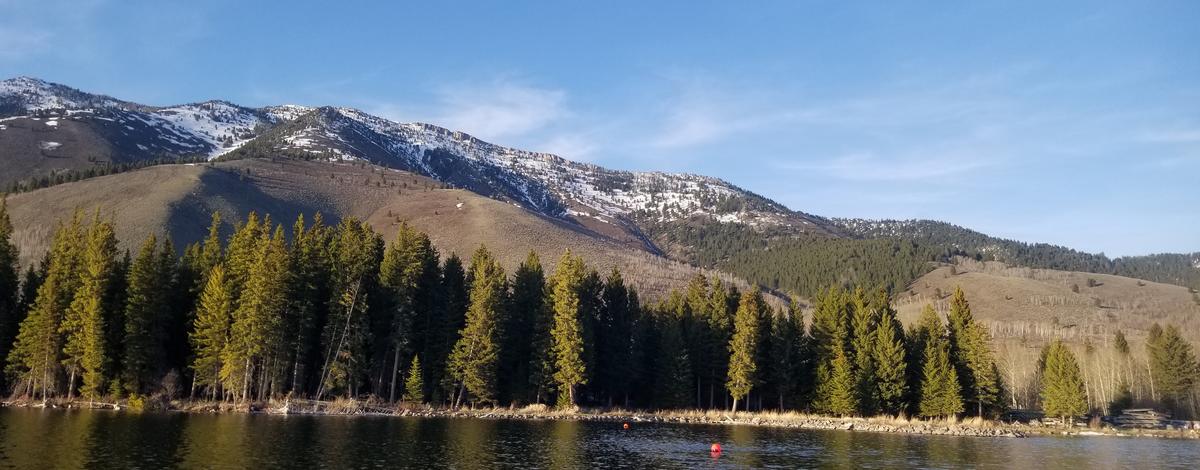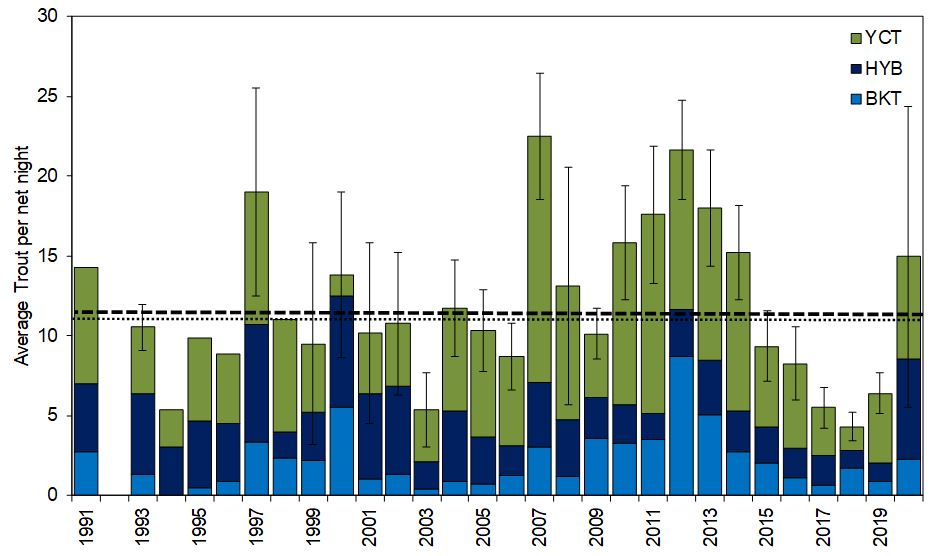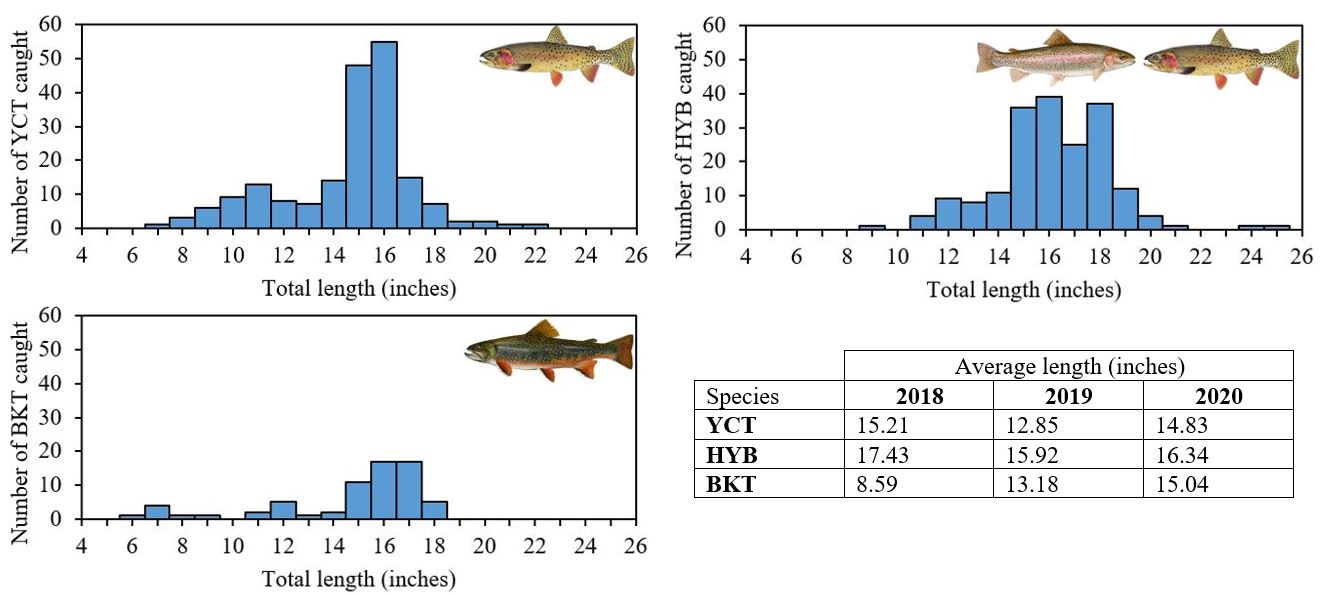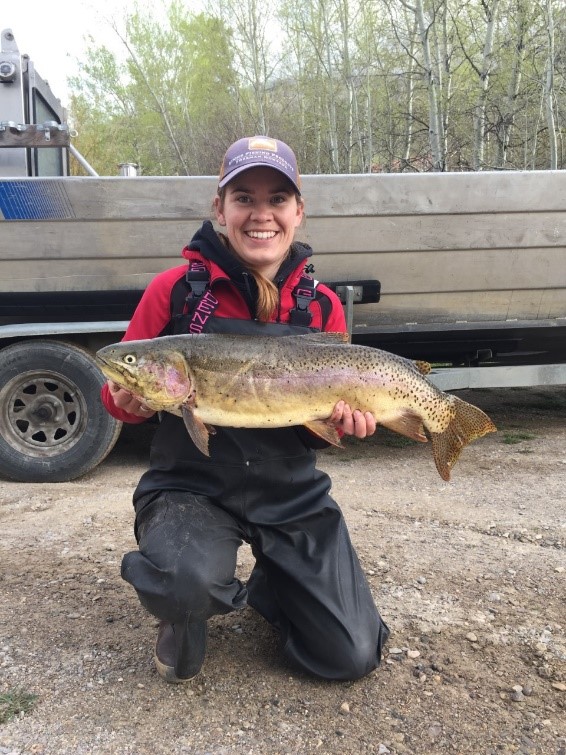Henrys Lake Quarterly Newsletter
|
|
COVID-19 |
Many of you may have noticed that the hatchery has been closed to the public and our IDFG presence has been reduced around the lake in the last few months. In response to guidance from Idaho Department of Health and Welfare, all IDFG hatcheries remain closed across the state to limit the risk of transmitting the COVID-19 virus to both department staff and local residents until further notice. Our goal is to continue to serve our sportsmen and women while keeping safety at the forefront of our work.
|
|
|
Another ongoing component of the project is an evaluation of movement and habitat use of Yellowstone Cutthroat Trout Oncorhynchus clarkii bouvieri and Utah Chub. This year we tagged 44 Yellowstone Cutthroat Trout and 45 Utah Chub using a combination of angling, trap nets, and electro-fishing. On average, Yellowstone Cutthroat Trout were 16.3 inches (SD = 1.9) long and varied between 12.4 and 22.1 inches. Utah Chub were 11.6 inches (SD = 1.3) long on average and varied between 9.6 and 14.5 inches. We will spend the remainder of the summer tracking fish movements and conducting habitat assessments. Look for more results and updates on this research in the next newsletter.
|
|
Soooo......how was the fishing on opening day weekend? |
|
For the brave folks who were not discouraged by the weather on opening day brought in a number of large fish. For those who waited until the snow disappeared, you were all also very lucky. Fishing at Henrys lake this year has been quite fruitful and our anglers have been very happy with both the number and size of trout they are catching on the lake. It seems as though fishing on Henrys Lake this year will be one for the books as I am still hearing great fishing reports out there! |
|
For opening weekend (May 23 and 24) 2020 we estimated a catch rate of 1.80 trout/hour. This catch rate is even higher than our estimate of 1.02 trout/hour for 2019 which itself was a great fishing year for our anglers. |
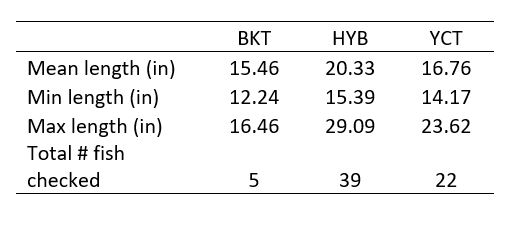
|
Stocking |
|
Upcoming June to September 2020 |
You can access the March 2020 edition of our newsletter here: |

